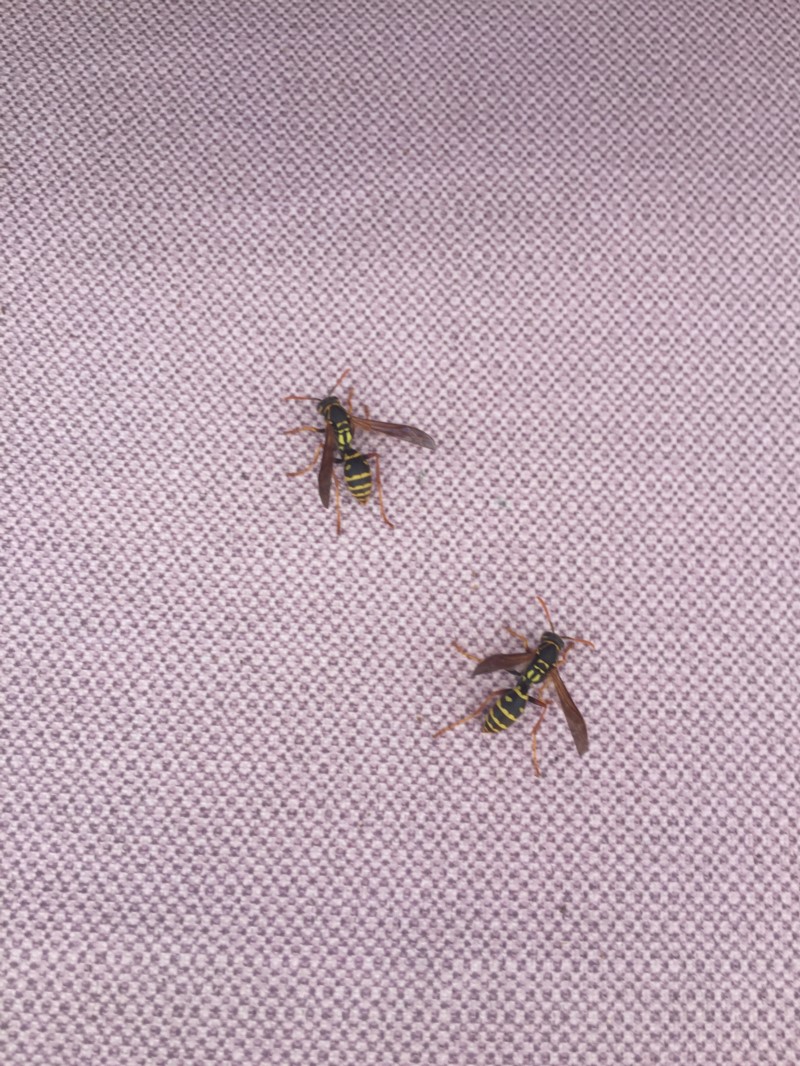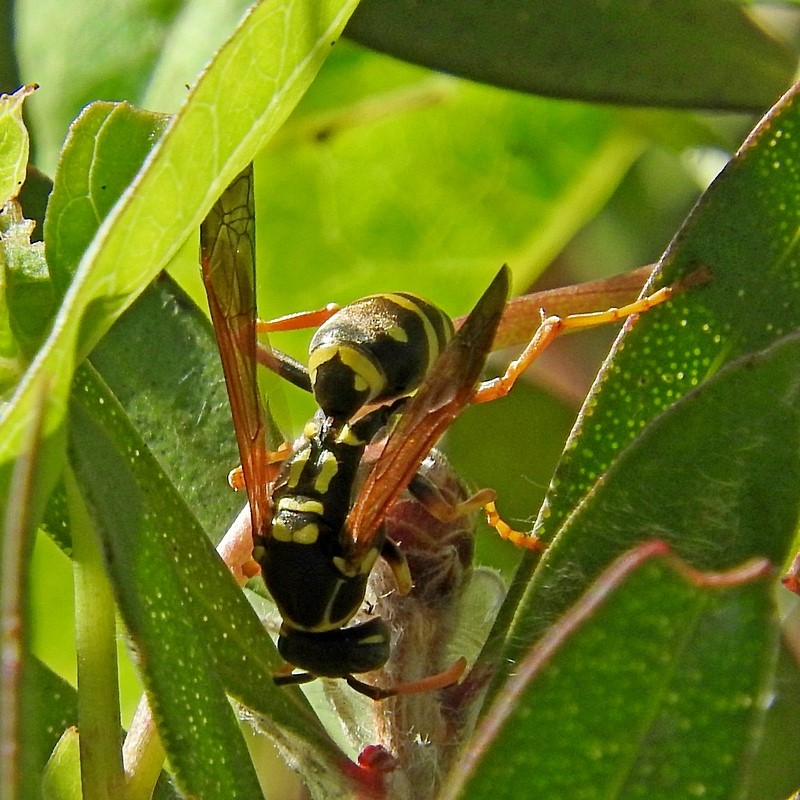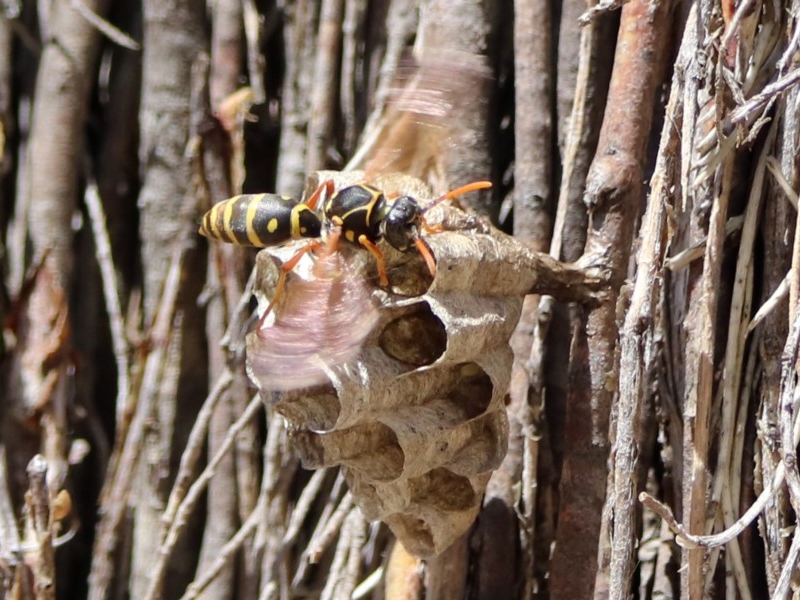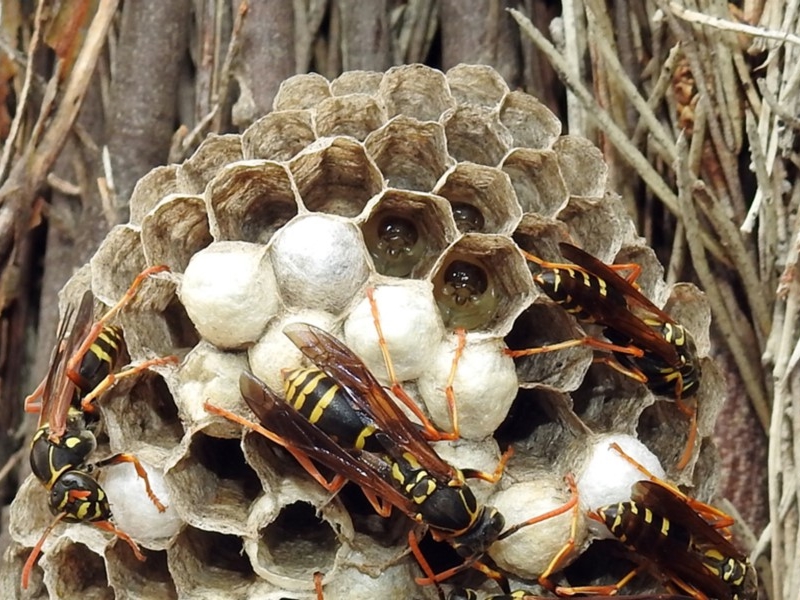WASP ALERT: notes from 2019
Update on the battle against the invasive Asian Paper Wasp
8th May, 2019
The Asian Paper Wasp (Polistes chinensis) is an introduced species which has recently arrived in the Bega Valley. This is an invasive pest and in mid April we launched a campaign to discover how widely they had spread.
We can now report that they do seem to be concentrated in and around Bega.
However, as there have also been a couple of nests discovered further afield (Pambula and Tathra), we assume that the problem is not confined to the Bega township.
Polistes chinensis sightings
The successful management of this pest is going to require the ongoing vigilance and involvement of all of us. Scroll down for further information, including:
Know your wasps
Map the spread
Stop the invasion
1. Know your wasps
The Asian Paper Wasp (Polistes chinensis) looks rather like our local, native paper wasps … but they can be identified by the distinct pattern of stripes and spots. They are well established in Canberra, but seem to have only recently arrived* here in the Bega Valley.
* Apparently this isn’t the first time the species has appeared here. A Bega Valley resident unearthed a photo he had taken of an “unusual looking wasp” back in 2017! Perhaps that early incursion was unsuccessful, or perhaps their numbers have been slowly growing.
Asian Paper Wasp (Polistes chinensis) Image: Max Campbell, Feb 2019, Bega
Asian Paper Wasp (Polistes chinensis) Image: Kerri-Lee Harris (Canberra, Feb 2018)
The Asian Paper Wasp makes a papery, multi-celled nest, which is suspended from a thin stalk (images below from Canberra Nature Map sighting, Feb 2019)
Get to know the locals … they are not invaders
Remember that we have many species of native wasps in the Bega Valley and region. They play crucial roles in the ecosystem as insect and spider predators and, in some cases, as pollinators. And it is these native wasps which are most at risk from the invaders. Help protect our native species by mapping and stopping the Asian Paper Wasp.
Be aware that we have a local, native species of paper wasp (Polistes humilis) which is related to the pest species. This native species is common, and looks quite similar to the introduced pest. Note that the local species (P. humilis) does not have the obvious yellow spots of the pest species (P. chinensis).
Another local, native species is the Small Brown Paper Wasp (Ropalidia plebeiana). These insects are smaller, but their colonial nests can be huge.
If you’re not sure of the exact identity of a wasp, that’s fine. Just take a few photos, add the sighting to iNaturalist, and one of our insect experts can check it for you. (Alternatively, send your photos and information to Atlas of Life contact, Kerri-Lee Harris info@atlasoflife.org.au)
2. Help us map the spread
Please report any sightings of the Asian Paper Wasp, Polistes chinensis.
Mapping is important in any pest management program, both during the initial outbreak and for longer term monitoring.
The best way is to add your sightings directly to iNaturalist.
3. Help us stop the invasion
Even if we can’t totally eradicate the Asian Paper Wasp, we may be able to reduce their impact.
If you find a nest, and you can confirm the species identity, the wasps and their nest should be destroyed.
NOTE: these wasps can be aggressive when threatened, and they do sting! Removal should only be carried out by a trained person.
For nests on public land, contact BVSC. They will arrange removal.
For nests on private land, please seek the help of a qualified pest controller.
BVSC contact: Andrew Morrison (AMorrison@begavalley.nsw.gov.au)
More information
In this interview by Sophie Longden of ABC South East Radio, Kerri-Lee Harris discusses how to recognise the Asian Paper Wasp, the problems they may cause, and how the community can help in monitoring and controlling their spread. (Date: 11th May, 2019. Duration: less than 12 minutes).
Further diagnostic information is available from the Australian Biosecurity website (PaDIL)
This campaign was developed as a collaborative initiative between the Atlas of Life in the Coastal Wilderness and the Bega Valley Shire Council. Its success depends upon the involvement and commitment of the wider community, and we thank everyone who is helping us to combat this threat to our natural environment.

















